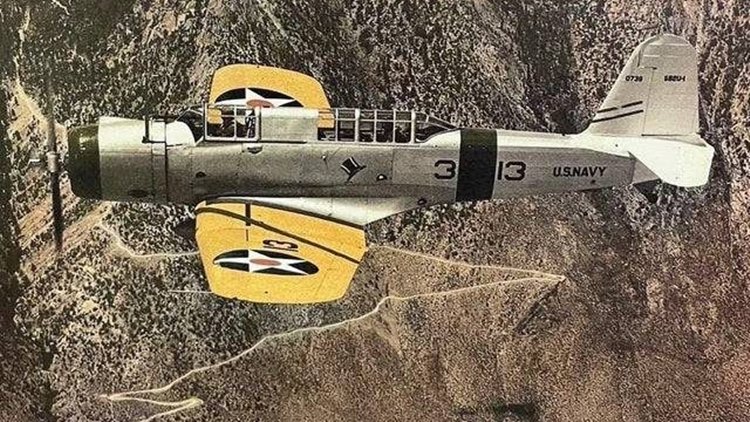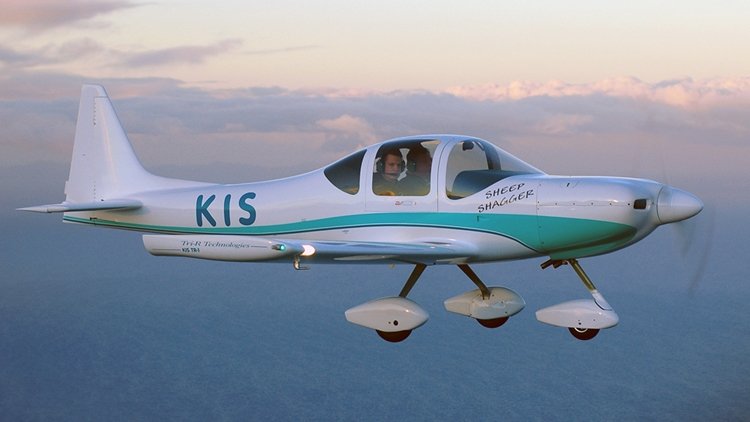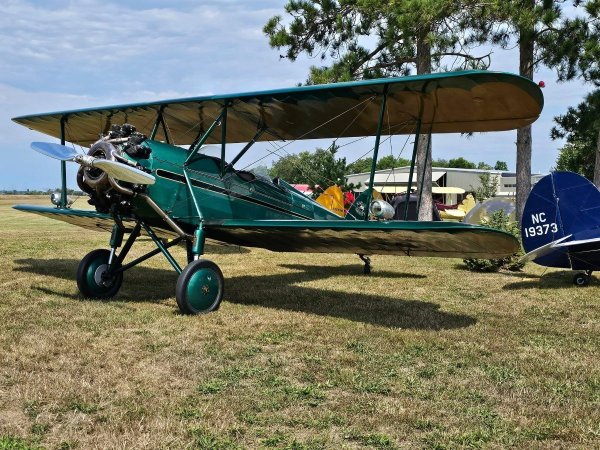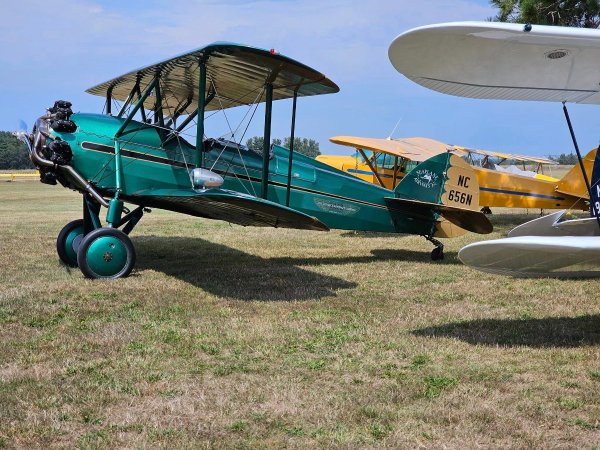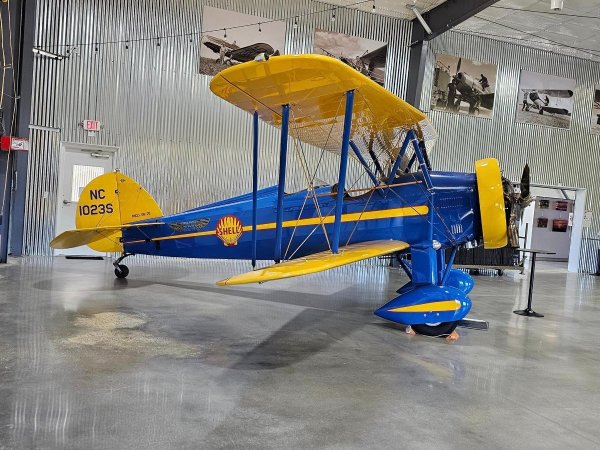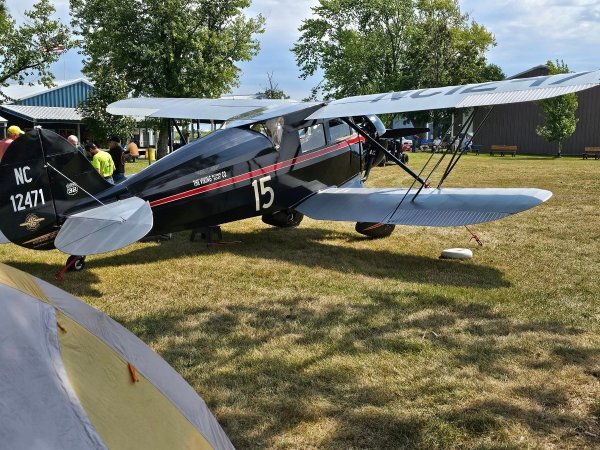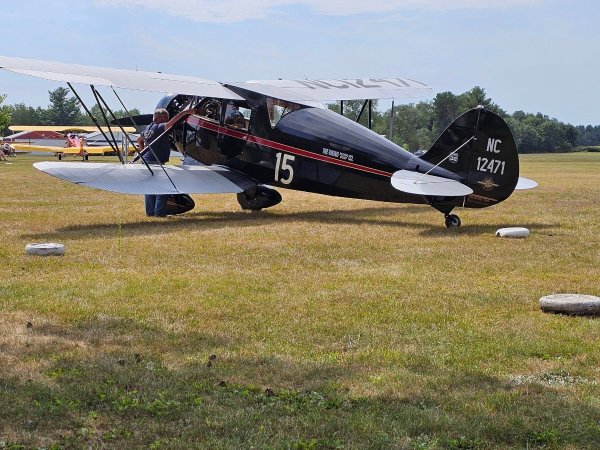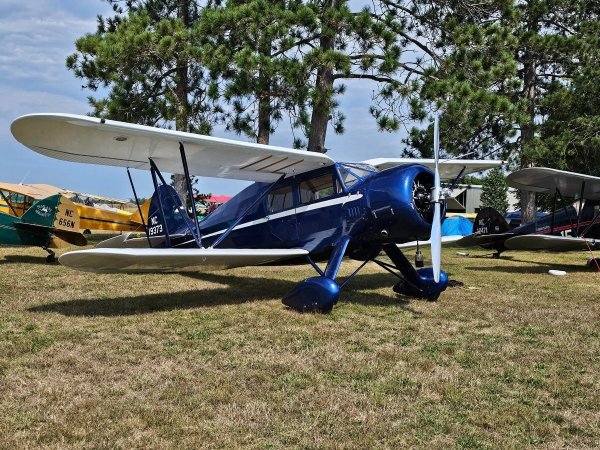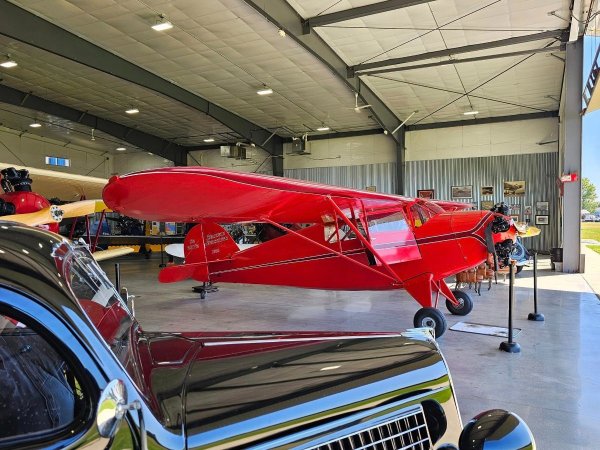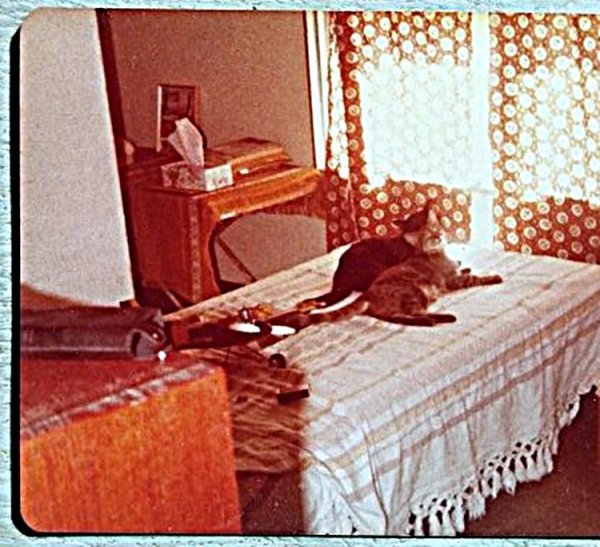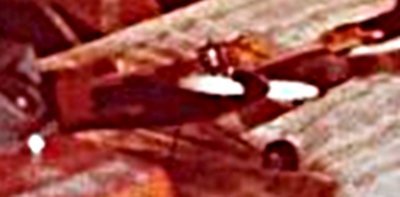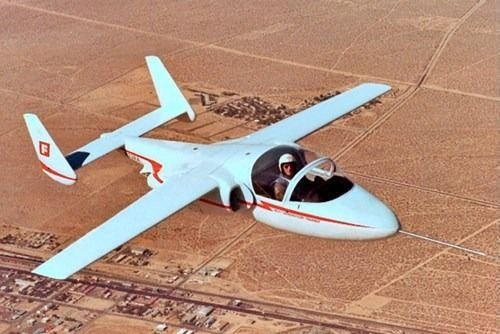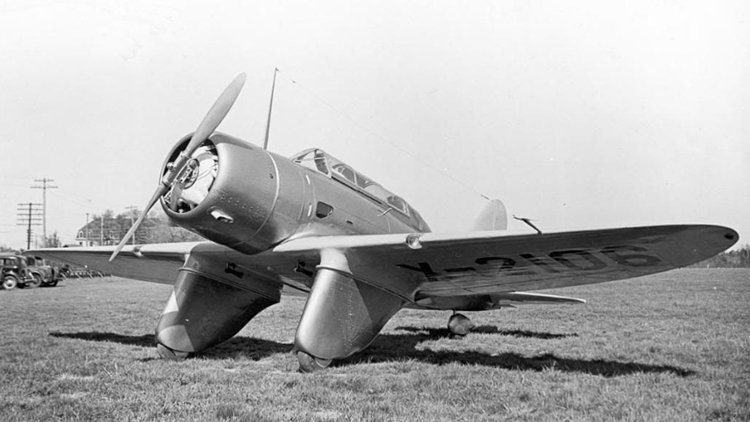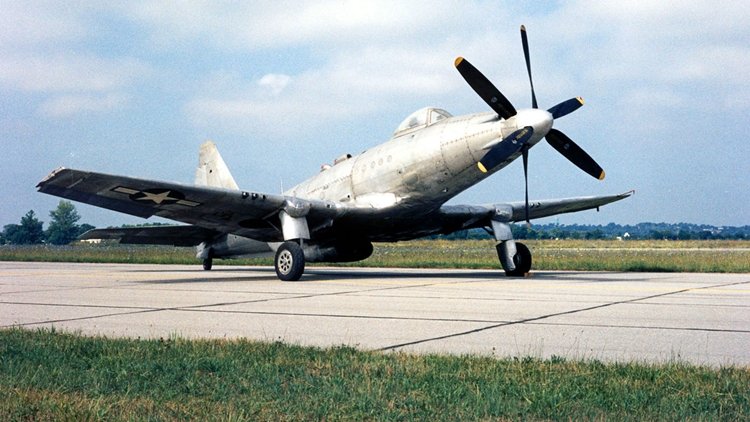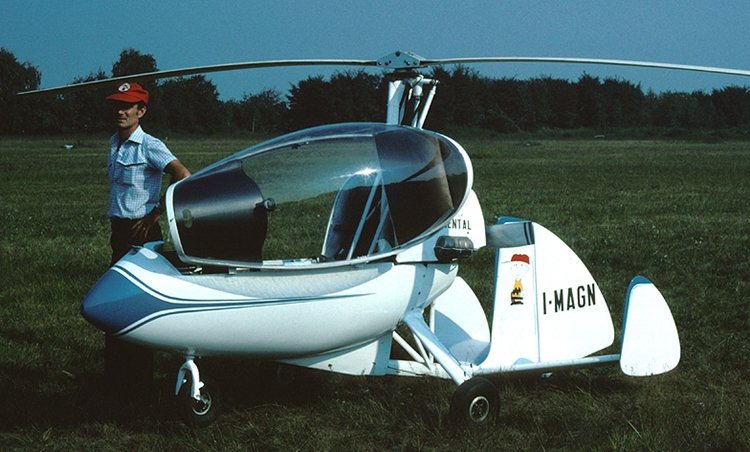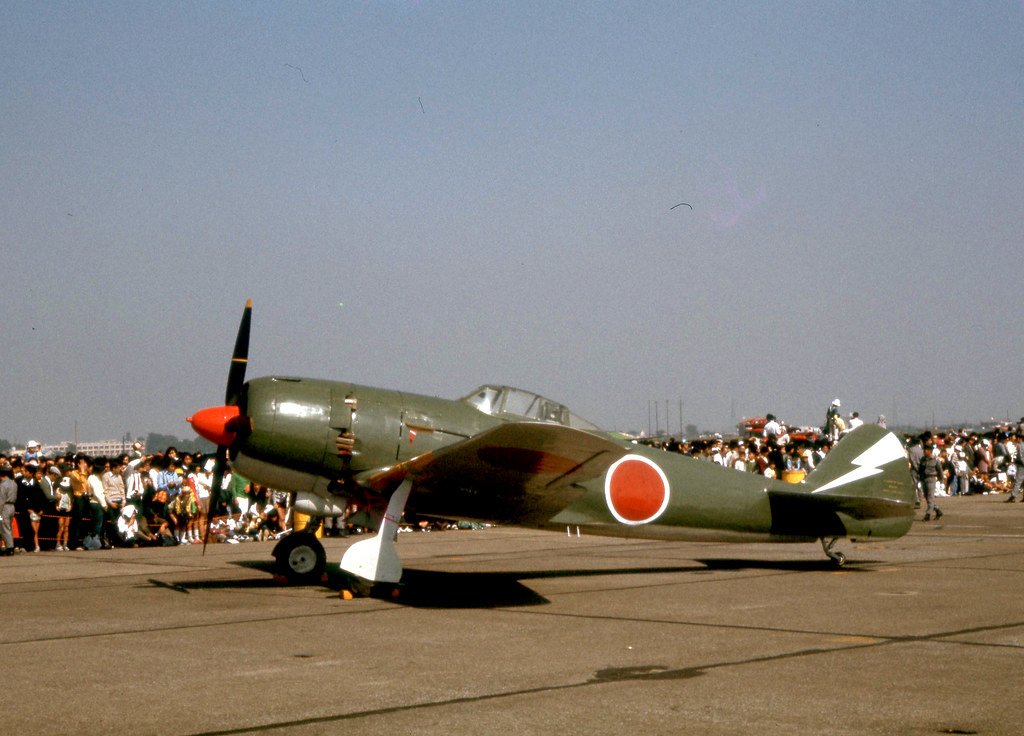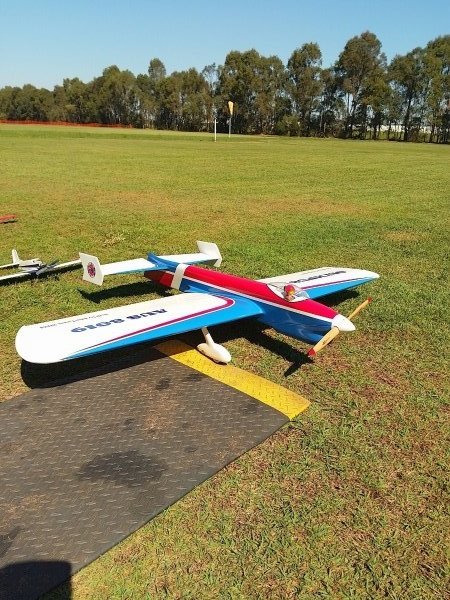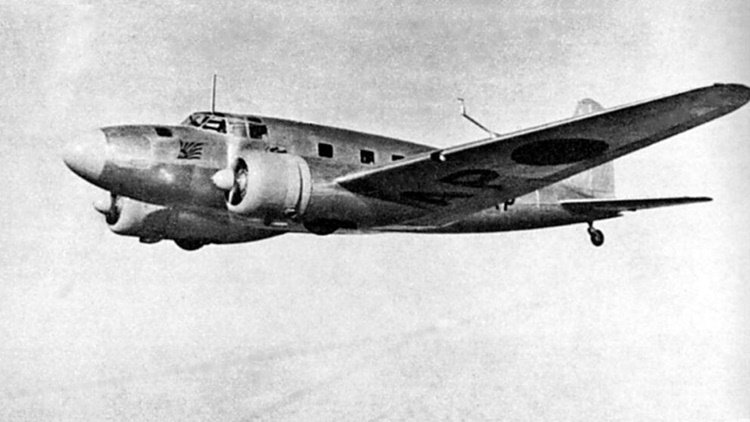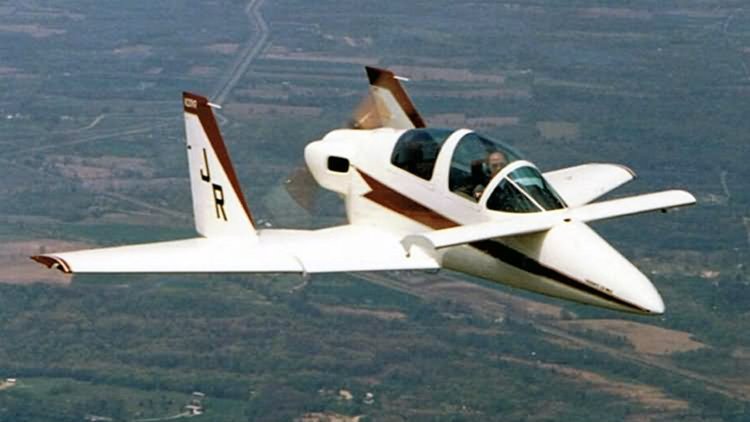-
Posts
7,563 -
Joined
-
Last visited
-
Days Won
67
Content Type
Profiles
Forums
Gallery
Downloads
Blogs
Events
Store
Aircraft
Resources
Tutorials
Articles
Classifieds
Movies
Books
Community Map
Quizzes
Videos Directory
Everything posted by red750
-
Thanks T510.
-
-
The Vought SB2U Vindicator is an American carrier-based dive bomber developed for the United States Navy in the 1930s, the first monoplane in this role. Vindicators still remained in service at the time of the Battle of Midway, but by 1943, all had been withdrawn to training units. It was known as the Chesapeake in Royal Navy service. In 1934, the United States Navy issued a requirement for a new Scout Bomber for carrier use, and received proposals from six manufacturers. The specification was issued in two parts, one for a monoplane, and one for a biplane. Vought submitted designs in both categories, which would become the XSB2U-1 and XSB3U-1 respectively. The biplane was considered alongside the monoplane design as a "hedge" against the U.S. Navy's reluctance to pursue the modern configuration. The XSB2U-1 was of conventional low-wing monoplane configuration with a retractable conventional tailwheel landing gear, the pilot and tail gunner being seated in tandem under a long greenhouse-style canopy. The fuselage was of steel tube construction, covered with aluminum panels from the nose to the rear cockpit with a fabric-covered rear fuselage, while the folding cantilever wing was of all-metal construction. A Pratt & Whitney R-1535 Twin-Wasp Junior radial engine drove a two-blade constant-speed propeller, which was intended to act as a dive brake during a dive bombing attack. The use of propeller braking was not entirely successful, and in practice US Navy Vindicators lowered the aircraft's undercarriage to act as a speed brake and dived at shallower angles. A single 1,000 lb (450 kg) bomb could be carried on a swinging trapeze to allow it to clear the propeller in a steep dive, while further bombs could be carried under the wings to give a maximum bombload of 1,500 lb (680 kg). For more details of design and development, operational history and eight variants, click here.
-
The Tri-R KIS TR-1 is an American homebuilt aircraft that was designed by Rich Trickel and produced by Tri-R Technologies of Oxnard, California, introduced in the 1990s. When it was available the aircraft was supplied as a kit for amateur construction. Trickel's main business was High Tech Composites, a company that produced many airframe components under sub-contract for kit aircraft such as the Lancair 235, Lancair 320 and Lancair IV. Trickel originally drew a new aircraft as a set of three-views for a customer in Australia who was looking for a new, conventional aircraft concept. The customer liked the design, but never paid for the drawings, so Trickel brought them home and completed the design work himself. Eventually the new design became the KIS TR-1. The KIS TR-1 features a cantilever low-wing, a two-seats-in-side-by-side configuration enclosed cockpit accessed via gull-wing doors, fixed tricycle landing gear or optionally conventional landing gear with wheel pants and a single engine in tractor configuration. The aircraft is made from composites. Its 23.00 ft (7.0 m) span rectangular wing employs a NACA 63-215 airfoil, mounts flaps and has a wing area of 88.00 sq ft (8.175 m2). The acceptable power range is 80 to 125 hp (60 to 93 kW) and the standard engines used are the 125 hp (93 kW) Continental O-240, the 108 hp (81 kW) Lycoming O-235-C1B or the 80 hp (60 kW) Limbach L2000 powerplant. The KIS TR-1 has a typical empty weight of 750 lb (340 kg) and a gross weight of 1,300 lb (590 kg), giving a useful load of 550 lb (250 kg). With full fuel of 20 U.S. gallons (76 L; 17 imp gal) the payload for the pilot, passenger and baggage is 430 lb (200 kg). The standard day, sea level, no wind, take off with a 125 hp (93 kW) engine is 600 ft (183 m) and the landing roll is 1,200 ft (366 m). Variants KIS TR-1 (Specifications below) Original model with tricycle landing gear and a gross weight of 1,300 lb (590 kg). By 1998 the company reported that 25 aircraft were completed and flying. In March 2014 ten examples were registered in the United States with the Federal Aviation Administration, although a total of 13 had been registered at one time.[3] Also in March 2014 there were seven registered in the United Kingdom with the CAA. KIS TR-1/TD Conventional landing gear-equipped version ("Taildragger"), with an empty weight of 800 lb (360 kg) and a gross weight of 1,425 lb (646 kg). Fuel is 34 U.S. gallons (130 L; 28 imp gal). By 1998 the company reported that eight aircraft were completed and flying. The manufacturer estimated the construction time from the supplied kit as 1000 hours. Tri-KIS TR-1/TD
-
-
The Taildragger Group on Facebook posted some great photos which I have downloaded and posted here. This is just half of them. I will post the rest later. They have not been resized or altered in any way. Click on them to see the full sized version.
-
This one never made it off the drawing board. No prototype built. The Nakajima G10N Fugaku (Japanese: 富岳 or 富嶽, "Mount Fuji") was a planned Japanese ultra-long-range heavy bomber designed during World War II. It was conceived as a method for mounting aerial attacks from Japan against industrial targets along the west coast (e.g., San Francisco) and in the Midwest (e.g., Detroit, Milwaukee, Chicago, and Wichita) and the northeast (e.g., New York City and Norfolk) of the United States. Japan's worsening war situation resulted in the project's cancellation in 1944. The Fugaku had its origins in "Project Z (bomber project)", a 1942 Imperial Japanese Army specification for an intercontinental bomber which could take off from the Kuril Islands, bomb the contiguous United States, then continue onward to land in German-occupied France. Once there, it would be refueled and rearmed and make another return sortie. Project Z called for three variations on the airframe: heavy bomber, transport (capable of carrying 300 troops), and a gunship armed with forty downward-firing machine guns in the fuselage for intense ground attacks at the rate of 640 rounds per second (i.e. 38,400 rounds per minute). The project was conceived by Nakajima Aircraft Company head Chikuhei Nakajima. The design had straight wings and contra-rotating four-blade propellers. To save weight, some of the landing gear was to be jettisoned after takeoff (being unnecessary on landing with emptied bomb load), as had been planned on some of the more developed German Amerika Bomber competing designs. It used six engines,[1] as with the later Amerikabomber design competitors, to compensate for nearly all German aircraft engines being limited to 1,500 kW (2,000 hp) maximum output levels apiece. Development was initiated in January 1943 and a design and manufacturing facility built in Mitaka, Tokyo. Nakajima's 4-row 36-cylinder 5,000 hp Ha-54 (Ha-505) engine was abandoned as too complex. Flightsim image.
-
The Breda-Zappata B.Z.308 was an Italian four-engined airliner produced by Breda. It was conceived by the engineer Filippo Zappata in 1942, still in time war, with all the problems connected to the priorities of the moment, so much so that the September 8, 1943 only the fuselage of the prototype was built. In the period 1944-45 the work was blocked first by the Germans and, at the end of the conflict, by the Allies, whose Allied Armistice Commission prohibited the continuation of any aeronautical project until the beginning of 1946 The B.Z.308 was a four-engined civil transport developed in the late 1940s for operation over both European and transatlantic routes. A large low-wing monoplane of all-metal construction, it was powered by four Bristol Centaurus radial engines driving five-bladed propellers. It had a large tailplane with endplate fins and rudders, and had retractable landing gear. The fuselage, oval in cross-section, accommodated a flight crew of five and 55 passengers in two cabins; a high-density model was planned with seats for 80. In early 1946 the work resumed, also slowed down by British resistance to delivering the needed engines, so the aircraft was completed in June 1946 and the first flight took place on August 27, 1948. V.Meleca Construction began during 1946, under aircraft designer Filippo Zappata at Breda's Sesto San Giovanni works. The Allied Commission halted the work, which was not resumed until January 1947. Further delays in the delivery of Bristol Centaurus engines delayed the first flight, which was on 27 August 1948, piloted by Mario Stoppani. Although flight testing went well, the project was abandoned as a result of financial problems, anticipated competition from American airliners in the postwar market, and pressure (under the Marshall Plan) to close down Breda's aeronautical section. Breda subsequently stopped producing aircraft entirely. Only the one was produced. Maximum speed: 573 km/h (356 mph, 309 kn) Cruise speed: 441 km/h (274 mph, 238 kn) at 4,300 m (14,100 ft) Stall speed: 135 km/h (84 mph, 73 kn) Range: 7,700 km (4,800 mi, 4,200 nmi) Service ceiling: 8,000 m (26,000 ft)
-
Hi Danny. I have no idea why you are having such problem with you images. I have played around with them a bit - rotate, crop, adjust colour. Then I cropped down to just the plane.
-
Two NASA astronauts will endure months of intense radiation exposure after Boeing's Starliner spacecraft stranded them on the International Space Station. Astronauts Sunita Williams and Barry Wilmore have been stuck on the ISS for three months. This has already put them at risk of receiving about 40 mSv to 80 mSv of radiation, which is roughly equivalent to 120 to 240 chest x-rays. They won't return to Earth until February 2025 at the earliest, and will have spent at least eight months in space and risked radiation exposure roughly equivalent to 310 to 630 chest x-rays. Studies have shown that doses of radiation at that level increase long-term risk of cancer, cardiovascular disease and central nervous system damage, according to NASA.
-
The Fairchild T-46 was an American light jet trainer aircraft of the 1980s. It was cancelled in 1986 with only three aircraft being produced due to cost over-runs and budget cuts.
-
The Seversky SEV-3 was an American three-seat amphibian monoplane, the first aircraft designed and built by the Seversky Aircraft Corporation. The SEV-3 was an all-metal cantilever low-wing monoplane powered by a nose-mounted 420 hp (313 kW) Wright J-6 Whirlwind radial engine. It had two cockpits in tandem, a forward cockpit for the pilot and a rear cockpit for two passengers, both with sliding canopies. It could either be fitted with twin amphibious floats which had main wheels fitted in the floats to allow it to operate from land, or with a fixed tailwheel undercarriage with the mainwheels enclosed in large fairings. The SEV-3 first flew as a floatplane in June 1933, demonstrating excellent performance as both an amphibian and a landplane. It was built in small numbers mainly for export. An SEV-3 established a world speed record for piston-engined amphibians in 1933, and on 15 September 1935, a Wright Cyclone-powered SEV-3 set a record of 230 mph (370.8 km/h) which stood for 49 years. A landplane version was also developed with conventional landing gear. The design influenced a long line of Seversky and later Republic aircraft, eventually leading to the development of the P-47 Thunderbolt. A landplane version was used by the United States Army Air Corps as a basic trainer with the designation BT-8, 30 of which were ordered in 1935. This proved grossly underpowered and was quickly replaced by the North American BT-9. One BT-8 was delivered to Bolling Field, on 11 June 1936, for use by Chief of the Air Corps Major General Oscar Westover, and assigned to the 14th Bombardment Squadron, GHQ Air Force. It replaced an O-38F, which was reassigned to the 21st Observation Squadron, GHQ Air Force, for general flying. Variants SEV-3XAR Landplane trainer SEV-3XLR Landplane SEV-3M-WW Amphibian for the Colombian Air Force, six built (only delivered four to Colombia), with Wright Whirlwind engines. BT-8 (Specifications below) Landplane basic-trainer for the United States Army Air Corps, developed from SEV-3XAR. 30 built. SEV-X-BT multi-discipline trainer version of the BT-8 with retractable undercarriage. The sole SEV-X-BT lost in competition to the North American BT-9 and was reportedly scrapped for spares to service the Seversky 2PA.
-
The Fisher P-75 Eagle was an American fighter aircraft designed by the Fisher Body Division of General Motors. Development started in September 1942 in response to United States Army Air Forces requirement for a fighter possessing an extremely high rate of climb, using the most powerful liquid-cooled engine then available, the Allison V-3420. The program was cancelled after only a small number of prototypes and production aircraft had been completed, as it was no longer required in its original role, could not be quickly deployed, and possessed no significant advantages over aircraft already in production/ In October 1942, the contract for two prototypes, designated "XP-75", was signed with the Fisher Body Division of GM. The design concept was to use the outer wing panels from the North American P-51 Mustang, the tail assembly from the Douglas A-24 (SBD), and the undercarriage from the Vought F4U Corsair in a general layout much as in the Bell P-39 Airacobra with the engine located amidships with the contra-rotating propellers driven through extension shafts. At an early design stage, however, Curtiss P-40 Warhawk outer wing panels were substituted for the P-51 panels. In mid-1943, the need for long-range escort fighters became more urgent than fast climbing interceptors so a decision was made to order six more XP-75 airplanes modified for the long-range role. At this time, an order for 2,500 production aircraft was also let, but with the stipulation that if the first P-75A was not satisfactory the complete order might be canceled. At the time, General Motors was busy in several projects towards the war effort, including the mass production of several different aircraft types, among them the Grumman TBF Avenger. Some sources[2] claim that the P-75 was the result of a scheme to get General Motors out of being forced to build Boeing B-29 Superfortresses; the P-75 project being a "high-priority" project to help GM avoid the added strain of Superfortress production. The "Eagle" was given extensive media coverage prior to its first flight, being trumpeted as a "wonder plane". Powered by a V-3420-19 24-cylinder engine rated at 2,600 hp (1,900 kW) driving co-axial contra-rotating propellers, the XP-75 flew for the first time on 17 November 1943. The second XP-75 flew shortly thereafter, with all six long-range XP-75s entering the test program by the spring 1944. The test program brought up numerous teething problems, including miscalculation of the fighter's center of mass, failure of the engine to produce its expected power, inadequate engine cooling, high aileron forces at high speed, and poor spin characteristics. Redesigns were introduced into the long-range XP-75s including a modified tail assembly, new "bubble" canopy, and a V-3420-23 engine that corrected most of the deficiencies by the time the first P-75A Eagles entered flight testing in September 1944. By this time, the Army Air Forces had decided to limit the number of combat aircraft types in production and not enter into large-scale production of new types that might not be available before the war ended. As the twin-engine Lockheed P-38 Lightning and North American P-51 Mustang demonstrated excellent long-range capabilities, the production run of the P-75A Eagle was subsequently terminated on 6 October 1944. It was decided to use the six completed production aircraft for experimental work and development of the V-3420 engine. As a result of those events, the P-75A did not complete formal performance trials due to termination of the production contract. Ultimately, only eight XP-75s and six P-75As were built.
-
The Dassault Falcon 2000 is a business jet produced by French Dassault Aviation, a member of its Falcon business jet line. Developed from the Falcon 900 trijet, the smaller twinjet has less range. The Falcon 900 fuselage was shortened by 7 ft (2.1 m) to carry up to 10 passengers. The wing leading edge was modified and its inboard slats were removed. It was introduced in 1995 for $17.85 million, while the 2023 Falcon 2000LXS lists for $36 million. Variants Falcon 2000 Original version certified in 1994[4] with CFE (General Electric & AlliedSignal) CFE738-1-1B turbofans,[5][6] with 5,918 pounds-force (26.32 kilonewtons) of thrust each, a range of 2,841 nautical miles [nmi] (5,262 km; 3,269 mi) range and Collins Pro Line 4 avionics suite.[2] Falcon 2000EX Re-engined variant certified in 2003 with Pratt & Whitney Canada PW308C turbofan engines,[5] 7,000 lbf (31 kN) each, offering a 3,878 nmi (7,182 km; 4,463 mi) range. Falcon 2000EX EASy Marketing designation for a 2000EX with changes to pressurisation and oxygen systems, certified in 2004, and Honeywell Primus Epic-based EASy avionics suite, including synthetic vision. Undertook steep approach trials at London City Airport on 18 March 2010, becoming the first Dassault twin-jet to visit apart from the much older, diminutive Dassault Falcon 10. Falcon 2000DX Updated model certified in 2007[4] and based on the 2000EX EASy with the same PW308C turbofans. Shorter-range of 3,250 nmi (6,020 km; 3,740 mi) for $28.5 million. Falcon 2000LX Longer-range 2000 variant of the Falcon 2000EX EASy, with the addition of Aviation Partners Blended Winglets, giving it a range capability of 4,000 nautical miles (7,400 km; 4,600 mi).[8] The same winglets are certified for the entire Falcon 2000 series as a retrofit kit. Falcon 2000S Variant which began testing in 2011 with short field characteristics. Landing distance has been reduced to 705 meters, opening up 50% more airports than other aircraft in this class. Compared to the $5 million more expensive LXS, the S range is shorter by 500 mi (800 km; 430 nmi) by restricting its fuel capacity to 14,600 lb (6,600 kg). It burns 2,350–2,400 lb (1,070–1,090 kg) of fuel in the first hour and 1,600–1,650 lb (730–750 kg) afterwards, and can take off in 4,325 ft (1,318 m) at sea level on a standard day. In 2021, its equipped price was $28.8M. It offers a 3,350 nmi (6,200 km; 3,860 mi) range. Falcon 2000LXS (Specifications below) Replacement for the long-range 2000LX and introduced in 2014. Relative to its predecessor, the Falcon 2000LXS offers greatly improved takeoff and landing performance, superior cabin comfort and reduced emissions. It also has a lower approach speed (194 km/h vs. 210 km/h), enabling it to land in a shorter distance, 689 m vs. 800 m, equivalent to turboprop aircraft. In 2021, its equipped price was $35.1M. Falcon 2000MRA/MSA The Maritime Reconnaissance Aircraft (MRA) or Maritime surveillance aircraft (MSA) is a militarized variant based on the Falcon 2000LXS. Six Falcon 2000MSA were ordered by the Japan Coast Guard in 2015, with delivery expected from 2019 onwards. Falcon 2000 Albatros Derived from the Falcon 2000MRA, the Falcon 2000 Albatros was selected in 2020 to replace the French Naval Aviation's Falcon 50 Surmar and Falcon 200 Gardian aircraft. The aircraft is designed for maritime surveillance and intervention missions. It will incorporate a multifunction under-fuselage radar, a high-performance electro-optical/infrared (EO/IR) system, observation windows, a Search & Rescue chain release system and dedicated communications systems. Seven units have been ordered and are to be delivered from 2025 onwards, with the acquisition of five additional units planned for a total of twelve aircraft.
-
The Tervamäki JT-5, later marketed as the VPM MT-5, is a single-seat autogyro developed in Finland by Jukka Tervamäki in the early 1970s and which was marketed in kit form for amateur construction. A development of his ATE-3 design of 1968, the JT-5 first flew in 1973, and Tervamäki sold the prototype, its tooling, and its manufacturing rights the following year. The JT-5 features a streamlined fuselage pod that fully encloses its cockpit and a single, piston engine that drives a pusher propeller. It has a two-bladed main rotor, and fixed, tricycle undercarriage. The structure makes extensive use of composite materials around a frame of welded steel tube. The empennage is a triple tail that consists of a large fin and rudder plus smaller fins at the ends of the horizontal stabiliser, an arrangement that Tervamäki compared to that of the Lockheed Constellation. This configuration was chosen to increase the area of the tail surfaces and therefore the static and dynamic stability of the aircraft. Tervamäki saw this as an important safety feature to reduce the possibility of pilot-induced oscillation, which had been implicated in fatal autogyro crashes. The cockpit is enclosed by an expansive plexiglass canopy that hinges sideways. The instrument panel and the firewall that separates the cockpit from the rotor mast and engine hinge together with the canopy. This feature was intended to facilitate inspection and maintenance of the instruments, nosegear, rudder pedals, and front side of the engine. The level of access to the engine that this created was so great that most routine engine inspection tasks could be carried out without removing the cowling. Provisions for cold weather include an optional cabin heater, a ventilation system to prevent canopy fogging, and a carburettor heater. The prototype was powered by a Volkswagen automotive engine modified for aero use by Limbach Motorenbau. VPM specified a Limbach L1700 for the MT-5 instead. The aircraft is equipped with a pre-rotation mechanism for the rotor. Design work on the JT-5 began in 1969, and construction of the prototype the following year. Initially, the work was shared between Tervamäki and Aulis Eerola, with whom he had collaborated on the ATE-3. Eerola contributed to some of the construction work, but departed the project before its completion. Some of the funding for the development work came from a grant by the Finnish Technical Foundation. Tervamäki estimated that around 2,000 hours' work went into the prototype over three years. He later reflected that this level of effort was contrary to one of the main reasons he had originally been drawn to autogyros: their simplicity. The prototype first flew on 7 January 1973, carrying the registration OH-XYS. Apart from the prototype, at least four other JT-5s were built by 2009, three in Finland and one in Sweden, with a number of others under construction. Tervamäki continued to sell JT-5 plans for some time, with around 60 sets sold by 1979. He later made them available for free download on his personal website.
-
The Nakajima Ki-84 Hayate (キ84 疾風, lit. "Gale") is a single-seat fighter flown by the Imperial Japanese Army Air Service in the last two years of World War II. The Allied reporting name was "Frank"; the Japanese Army designation was Army Type 4 Fighter (四式戦闘機, yon-shiki-sentō-ki). The Ki-84 is generally considered the best Japanese fighter to operate in large numbers during the conflict. The aircraft boasted high speed and excellent maneuverability with an armament (up to two 30 mm and two 20 mm cannon) that gave it formidable firepower. The Ki-84's performance matched that of any single-engine Allied fighter it faced, and its operational ceiling enabled it to intercept high-flying B-29 Superfortress bombers. Pilots and crews in the field learned to take care with the plane's high-maintenance Nakajima Homare engine and landing gear prone to buckling. The difficulties of Japan's situation late in the war took a toll on the aircraft's field performance as manufacturing defects multiplied, good quality fuel proved difficult to procure, and experienced pilots grew scarce. Nevertheless, a well-maintained Ki-84 was Japan's fastest fighter. A total of 3,514 aircraft were built. Design of the Ki-84 commenced in early 1942 to meet an Imperial Japanese Army Air Service requirement for a replacement to Nakajima's own, earlier Ki-43 fighter, then just entering service. The specification recognized the need to combine the maneuverability of the Ki-43 with performance to match the best western fighters, and heavy firepower. The Ki-84 first flew in March 1943[6] and deliveries from Nakajima's Ota factory commenced the following month. Although the design was itself solid, growing difficulties in securing skilled pilots, proper fuel and construction materials, and adequate manufacture often prevented the aircraft from reaching its full potential in the field. The design of the Ki-84 addressed the most common complaints about the popular and highly maneuverable Ki-43: insufficient firepower, poor defensive armor, and lack of climbing speed. The Ki-84 was a cantilever low-wing monoplane of all-metal construction, except for the fabric-covered control surfaces, with conventional landing gear.[8] Armament comprised two fuselage-mounted, synchronized 12.7 mm (.50 in) machine guns — these proved challenging to synchronize properly with the Hayate's four-blade propeller — and two wing-mounted 20 mm cannon, a considerable improvement over the two 12.7 mm (.50 in) machine guns used in the Ki-43 Hayabusa. Defensive armor offered Hayate pilots better protection than the unsealed wing tanks and light-alloy airframe of the Ki-43. In addition, the Ki-84 used a 65 mm (2.56 in) armor-glass canopy, 13 mm (.51 in) of head and back armor, and multiple bulkheads in the fuselage, which protected both the methanol-water tank (used to increase the effectiveness of the supercharger) and the centrally located fuel tank. It was the Nakajima firm's own-designed 35.8-litre (2,180 cu in) displacement, Ha-45 Homare ("Praise" or "Honor") air-cooled eighteen-cylinder radial engine, first accepted for military use in 1941, that gave the Hayate its high speed and prowess in combat. Derived from the Nakajima Homare engines common to many Japanese aircraft, the Hayate used several versions of the Homare engine, including the carbureted model 21 and the fuel-injected model 23 versions of the engine. Most Homare engines used water injection to aid the supercharger in giving the Ki-84 a rated 1,491 kW (2,000 hp) at takeoff. This combination theoretically gave it a climb rate and top speed roughly competitive with the top Allied fighters. Initial Hayate testing at Tachikawa in early summer 1943 saw test pilot Lieutenant Funabashi reach a maximum level airspeed of 624 km/h (387 mph) in the second prototype. In 1946, US Technical Intelligence bench-tested a Homare 45, Model 21 engine and verified the engine's maximum horsepower output using 96 octane AvGas, plus methanol injection. The first major operational involvement was during the battle of Leyte at the end of 1944, and from that moment until the end of the Pacific war the Ki-84 was deployed wherever the action was intense. The 22nd Sentai re-equipped with production Hayates. Though it lacked sufficient high-altitude performance, it performed well at medium and low levels. Seeing action against the USAAF 14th Air Force, it quickly gained a reputation as a combat aircraft to be reckoned with. Fighter-bomber models also entered service. On April 15, 1945, 11 Hayates attacked US airfields on Okinawa, destroying many aircraft on the ground. In the final year of the war the Ki-84, the Ki-100 (essentially a radial-engined version of the inline-powered Kawasaki Ki-61) and Kawanishi's N1K2-J were the three Japanese fighters best suited to combat the newer Allied fighters. For details of the 18 variants, click here. A total of 3,413 units were produced.
-
From Wikipedia, the free encyclopedia The Jurca MJ-5 Sirocco (named for the Sirocco wind) is a two-seat sport aircraft designed in France in the early 1960s and marketed for homebuilding. It is one of many wooden homebuilt designs from Romanian born designer Marcel Jurca. Jurca, a Henschel Hs 129 pilot in World War II marketed the plans in Canada and America through Falconar Aviation. It is a low-wing cantilever monoplane of conventional configuration and wooden construction throughout. The tandem seats are enclosed by a bubble canopy, and the tailwheel undercarriage can be built as either fixed or with retractable main units. Marcel Jurca died on 19 October 2001, at which time plans were still available from the designer's website. Plans are supplied by Avions Marcel Jurca and Manna Aviation of Australia.
-
If you missed tonight's investigation of the Boeing 737 Max fiasco on Channel 7's Spotight program, here is a link to 7plus streaming. https://7plus.com.au/7news-spotlight It is the first link showing Michael Usher, although the investigation was conducted by Liam Bartlett.
-
/graphics/ICAOtype/P28A.gif Runway excursion Incident Piper PA-28-181 Archer II VH-KLU, Thursday 29 August 2024 ASN.FLIGHTSAFETY.ORG A Piper PA-28-181 Archer II veered off the runway when landing at Cessnock Airport (CES/YCNK), Cessnock, New South Wales, and crashed into a fence. The pilot was seriously injured and ta...
-
If not a car, what about a bike? 688K views · 2.6K reactions | Not gonna lie, the prospect of just... WWW.FACEBOOK.COM Not gonna lie, the prospect of just flying over traffic has it's appeal 🙃
-
The Tairov OKO-1 (Opytno Konstrooktorskoye - experimental design section), was a passenger transport aircraft produced in the Ukrainian SSR in the USSR in 1937. Late in 1935 V.K. Tairov helped form the OKO (experimental design section) in Kiev. In 1937 the OKO-1 was completed as a six-seat passenger transport, with all wood construction, this single engined monoplane demonstrated good performance with state-of-the-art systems. Electrically driven flaps, pneumatic wheel brakes, trimmers on all the tail surfaces, heated cabin, lighting and instruments for night or blind flying, full sound-proofing and full GVF(civil air fleet) equipment were all incorporated. The performance of the aircraft in flight tests was regarded as excellent but, for unknown reasons, production was not undertaken. Status cancelled (no production commenced). Number built 1
-
The Mitsubishi Ki-57 was a Japanese passenger transport aircraft, developed from the Ki-21 bomber, during the early 1940s. In 1938, when the Ki-21 heavy bomber began to enter service with the Imperial Japanese Army, its capability attracted the attention of the Imperial Japanese Airways. In consequence, a civil version was developed and this, generally similar to the Ki-21-I and retaining its powerplant of two 708 kW (950 hp) Nakajima Ha-5 KAI radial engines, differed primarily by having the same wings transferred from a mid- to low-wing configuration and the incorporation of a new fuselage to provide accommodation for up to 11 passengers. This transport version appealed also to the navy, and following the flight of a prototype in August 1940 and subsequent testing, the type was ordered into production for both civil and military use. This initial production Ki-57-I had the civil and military designations of MC-20-I and Army Type 100 Transport Model 1, respectively. A total of 100 production Ki-57-Is had been built by early 1942, and small numbers of them were transferred for use by the Japanese navy in a transport role, then becoming redesignated L4M1. After the last of the Ki-57s had been delivered production was switched to an improved Ki-57-II, which introduced more powerful 805 kW (1,080 hp) Mitsubishi Ha-102 14-cylinder radial engines installed in redesigned nacelles and, at the same time, incorporated a number of detail refinements and minor equipment changes. Civil and military designations of this version were the MC-20-II and Army Type 100 Transport Model 2, respectively. Only 406 were built before production ended in January 1945. Both versions were covered by the Allied reporting name "Topsy". Variants Ki-57-I Army Type 100 Transport Model 1: Powered by two 708 kW (950 hp) Nakajima Ha-5 KAI radial engines and a redesigned fuselage to accommodate 11 passengers. About 100 aircraft of this type were built including the civil version. MC-20-I: Same as above but built for civil use with Imperial Japanese Airways (Dai Nippon Koku KK). Ki-57-II Army Type 100 Transport Model 2:Powered by two 805 kW (1,080 hp) Mitsubishi Ha-102 Zuisei 14-cylinder radial engines installed in redesigned nacelles. Minor equipment and detail refinements were also incorporated. 306 aircraft of this type were produced before the end of production in January 1945. Specifications of this model below. MC-20-II: Same as above but built for civil use with Imperial Japanese Airways (Dai Nippon Koku KK). L4M1: A small number of Ki-57-Is were transferred for test by the Japanese navy as transports and were redesignated L4M1.
-
The Rutan VariViggen is a homebuilt aircraft designed by Burt Rutan. The aircraft is a tandem two-seater of primarily wooden construction with a delta wing and a canard foreplane. The VariViggen is powered by a 150 hp Lycoming O-320 aero engine in pusher configuration. The prototype was designated Model 27, and the production version was Model 32. The VariViggen was named after the Swedish fighter plane, the Saab 37 Viggen. This and the XB-70 Valkyrie inspired the design. Rutan became interested in aircraft which resisted stalls and spins, and the VariViggen was his first full scale design. He began working with the design as a student at Cal Poly in the early 1960s, and started building the prototype in his garage in 1968. After four years of work, the aircraft made its first flight in April, 1972. In order to increase efficiency, the Model 32 (also known as the VariViggen SP) had a slightly longer fuselage, a larger wingspan and winglets. The Rutan Aircraft Factory sold 600 plan sets for the VariViggen to homebuilders, and eventually about 20 of the aircraft were built. Following the crash of one in New Brunswick, Canada in September 2006 due to wing tank fuel contamination, fewer than five are currently still flying. The prototype aircraft, N27VV, can be seen in the 1975 movie Death Race 2000 and was eventually donated to the EAA AirVenture Museum in 1988. Currently, (August 2024), there are 63 listed on airport-data.com. Rutan also began work on an all-aluminum variant, the MiniViggen, but later abandoned the project and focused his efforts on the VariEze.
-
Thanks Red, that one had escaped me. Here's the story. The Bristol Type 138 High Altitude Monoplane was a British high-altitude single-engine, low-wing monoplane research aircraft developed and produced by the Bristol Aeroplane Company during the 1930s. It set nine world altitude records, with the maximum altitude achieved being 53,937 ft (16,440 m) on 30 June 1937, during a 2¼-hour flight. A second aircraft, designated as the Type 138B, was ordered in 1935 but work was abandoned during 1937 without it having flown. The Type 138 was built during a period of intense competition between aviation manufacturers. Prestige and useful technological progress came from breaking major aviation records, such as airspeed, distance and altitude but by the 1930s, the resources and development work necessary to achieve these records was beyond individual companies, and required government assistance. Bristol found themselves lagging behind other companies from Germany, Italy, the United States, and the United Kingdom. Between 1929 and 1934, altitude records established by rival aircraft included those set by a Junkers W.34, a Vickers Vespa and a Caproni Ca.113 biplane, as well as the first flight over Everest by a pair of Westland Wallaces in 1933. All of these aircraft had been powered by Bristol engines. Between 1928 and 1938, the altitude record was broken 10 times, once using a Jupiter engine and five times using Pegasus engines which was seen as a major achievement for Bristol's engines. In November 1933, having observed British Air Ministry interest following the success of the Everest flight, aeronautical engineer Frank Barnwell proposed a purpose-built high-altitude research aircraft. This proposal, designated the Type 138, was a large single-engine, single-seat monoplane, equipped with a retractable undercarriage and a supercharged Pegasus radial engine. Nothing came of this until Italian pilot Renato Donati achieved a new world record during April 1934 prompting public opinion to swing in favour of a government-sponsored record attempt. In June 1934, the Air Ministry issued Specification 2/34, for a pair of prototypes capable of reaching an altitude of 50,000 ft (15,240 m). Bristol was among the companies which were invited to tender proposal. Barnwell revised the Type 138 proposal, producing the Type 138A whose size and configuration remained the same, but the retractable undercarriage was replaced with a fixed design to reduce weight and it would be powered by a two-stage supercharged Pegasus engine and provision for an observer was made. Using the Pegasus was expected to generate publicity and boost sales. Considerable research was carried out by both the Royal Aircraft Establishment (RAE) and National Physical Laboratory to fine tune the design of the aircraft, as well as to develop a reliable pressure suit to be worn by the pilot. Sir Robert Davis of Siebe Gorman and Professor J.S. Haldane were instrumental in developing the helmet. During tests, the pressure suit was tested to the equivalent altitude of 80,000 ft (24,384 m). In early 1936, the airframe was completed and on 11 May 1936 the Type 138A was flown for the first time by Cyril Uwins, Bristol's chief test pilot, who had previously flown the Vickers Vespa on its world record flight. As the engine was not ready, it was powered by a standard Pegasus IV driving a three-bladed propeller for the early flights. Two additional flights were performed at Filton prior to the aircraft being delivered to the RAE at Farnborough where the pressure helmet was tested prior to the aircraft being returned to Filton for the installation of the special Pegasus engine and a four-blade propeller. On 5 September 1936, the Type 138A returned to Farnborough for more test flights. For details of design. operational history, variants and specificatiions, click here.




